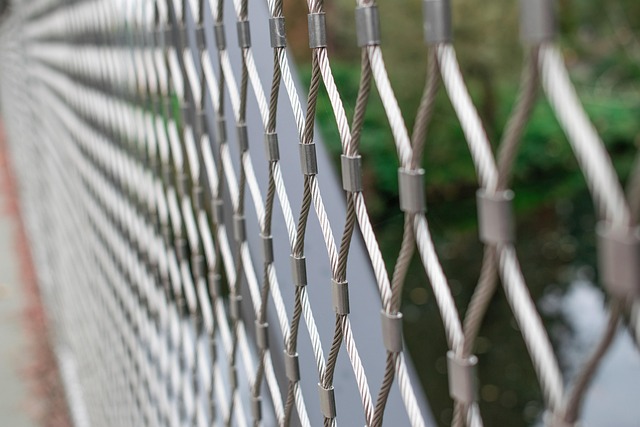Introducing Durable Wooden Fencing for Coastal Areas
Coastal environments pose unique challenges for fencing due to constant exposure to salt air, moisture, and extreme weather. This article explores how durable wooden fencing can withstand these harsh conditions, offering both aesthetic appeal and robust protection. We delve into the science behind choosing the right wood species tailored for coastal settings, provide installation and maintenance tips to ensure longevity, and highlight the numerous benefits this eco-friendly option brings to homes and businesses along the shore.
- Understanding Coastal Fencing Challenges
- Benefits of Durable Wooden Fencing
- Choosing the Right Wood Species for Coastlines
- Installation and Maintenance Tips
Understanding Coastal Fencing Challenges
Coastal areas present unique challenges when it comes to fencing due to their harsh, often relentless environments. Saltwater, strong winds, and frequent storms can significantly impact traditional fence materials, leading to regular maintenance or premature replacement. The key to durable coastal fencing lies in understanding these challenges and selecting materials that can withstand them.
Wooden fences, for instance, require special treatment to resist the corrosive effects of saltwater. Regular maintenance, such as re-staining or sealing, can prolong the life of wooden fencing but won’t necessarily make it storm-proof. For a more permanent solution, choosing treated wood, like pressure-treated cedar, or alternative materials like vinyl or steel, is essential. Each material has its advantages and must be considered based on factors like budget, aesthetic preferences, and specific climate conditions to ensure the longevity of the fence in these challenging environments.
Benefits of Durable Wooden Fencing
Durable wooden fencing offers an attractive and functional solution for coastal areas, providing a range of benefits. Firstly, wood is a natural, renewable resource that can be sustainably sourced, making it an eco-friendly choice. This type of fencing beautifully complements the surrounding environment, blending seamlessly with coastal landscapes.
Additionally, durable wooden fencing is highly resistant to corrosion and decay, thanks to advanced treatment methods. It can withstand harsh weather conditions, including salty sea air, strong winds, and intense sunlight, ensuring long-lasting performance. Moreover, wood provides excellent privacy and security, creating a safe and peaceful outdoor space for residents while adding aesthetic value to properties along the coast.
Choosing the Right Wood Species for Coastlines
When considering durable wooden fencing for coastal areas, selecting the right wood species is paramount to ensuring longevity and resistance against harsh environmental factors. Softwoods like cedar and redwood are popular choices due to their natural resistance to rot and insects, making them ideal for salty coastal environments. These woods also have a beautiful, naturally resilient appearance that enhances outdoor spaces.
However, it’s important to note that not all softwoods are created equal; some varieties are better suited for coastal use than others. For instance, treated wood options like pressure-treated pine or cedar can offer enhanced durability and resistance against moisture and pests. Additionally, exotic hardwoods like ipe or tropical cedars provide exceptional strength and beauty but may come with a higher price tag and environmental considerations.
Installation and Maintenance Tips
When installing wooden fencing in coastal areas, it’s crucial to prepare the posts and rails correctly. Begin by ensuring the soil is stable and compacted to prevent shifting. Consider driving metal stakes into the ground for added support, especially if the ground is soft or prone to erosion. Use pressure-treated wood designed for outdoor use to enhance durability against salt air and moisture. Regular cleaning with a mild detergent and occasional repainting or sealing will protect the fence from weather damage.
Maintenance involves keeping an eye out for loose connections, rot, or signs of insect infestation. Promptly address any issues by tightening joints, replacing damaged sections, or treating infestations with appropriate products. To maintain the aesthetic appeal and functionality of your coastal fencing, schedule annual inspections and routine cleaning to remove salt buildup and debris.
